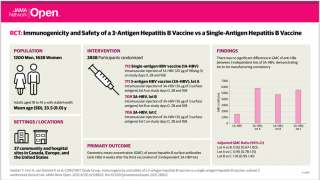Hepatitis B In Bangladesh Uncontrolled

Most of the 10 million people in Bangladesh carrying the Hepatitis B virus (HBV) do not know they have the infection.
Although donor screening prior to blood transfusion is completed every time, the quality control process is unable to prevent viral Hepatitis B virus (HBV) infections.
Health experts said the primary HBV test often yields false negatives results.
“About 4-7% of the population is HBV infected, and 3.5% of pregnant women have the virus,” reported Dr. Mohammad Ali, secretary general of National Liver Foundation of Bangladesh.
According to the National Liver Foundation in Bangladesh, about 60-70% of the infected individuals are not aware of the existence of HBV in their body.
“This mostly happens due to lack of awareness and failure of blood test screening,” Dr. Ali added.
Bangladesh Institute of Child Health (BICH) published research July, 2017 which found that of the 100 children up to the age of 15 who were admitted to the Dhaka Shishu Hospital with acute viral hepatitis in 2016, four had acute HBV infection.
Additionally, 90% of infected infants become chronically infected, compared with 2%–6% of adults.
The World Health Organisation (WHO) believes this lack of awareness and poor access to diagnostic tests means 95% of the 400 million people who live with Hepatitis may not know they are infected.
A joint study by the WHO, the Directorate General of Health Services, and the Institute of Epidemiology, Diseases Control and Research (IEDCR) found that one third of the blood tests taken at blood transfusion centres across Bangladesh were incorrect when compared with the results obtained at IEDCR.
According to the WHO, people become infected with Hepatitis B by receiving unsafe blood, typically through a blood transfusion. The primary test for the virus is the HBsAg test, but it can yield false negatives.
WHO recommends the mandatory screening of all blood donations for HIV, Hepatitis B, Hepatitis C, and syphilis according to the quality system requirements.
Hepatitis B is a viral infection that attacks the liver and can cause both acute and chronic disease. The virus is transmitted through contact with the blood or other body fluids of an infected person.
Transmission of hepatitis B virus from mother to infant during the perinatal period represents one of the most efficient modes of HBV infection and often leads to severe long-term consequences.
The WHO reports that infants born to mothers positive for hepatitis B surface antigen (HBsAg) and hepatitis B "e" antigen (HBeAg) have a 70%-90% chance of acquiring perinatal HBV infection and 85%-90% of infected infants will become chronic HBV carriers.
It has been estimated that more than 25% of these HVB carriers will die from primary liver cell carcinoma or cirrhosis of the liver.
The Hepatitis B vaccine is made from parts of the hepatitis B virus. It cannot cause hepatitis B infection. The vaccine is usually given as 3 or 4 shots over a 6-month period.
The HBV vaccine is recommended for extended stay travelers, and is reported to be over 90% effective. The current CDC vaccine price list for HBV vaccines can be found here.
Our Trust Standards: Medical Advisory Committee

























